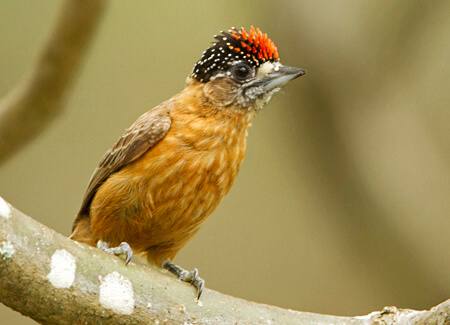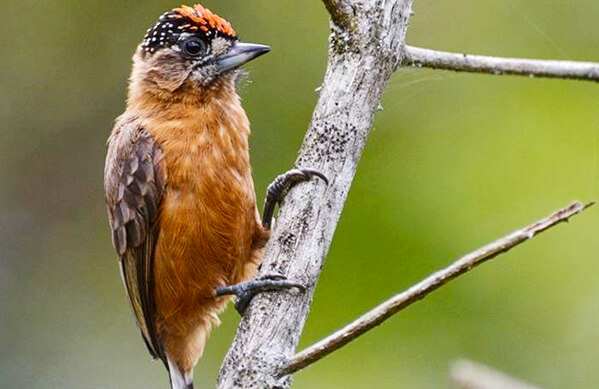 This piculet is only found in northeastern Brazil, where it shares habitat with the Araripe Manakin and White-browed Antpitta. Like many other species with small ranges, it's threatened by habitat loss. The bird is considered scarce and is classified as Near Threatened by the International Union for Conservation of Nature.
This piculet is only found in northeastern Brazil, where it shares habitat with the Araripe Manakin and White-browed Antpitta. Like many other species with small ranges, it's threatened by habitat loss. The bird is considered scarce and is classified as Near Threatened by the International Union for Conservation of Nature.
Alike Yet Different
Like other woodpeckers (including another Brazilian specialty, the Kaempfer's Woodpecker), piculets have large heads, long, barbed tongues used to snare their insect prey, and zygodactyl feet, with two toes pointing forward and two backward.
However, piculets are much smaller than most other woodpeckers and lack the stiff tail feathers of their larger relatives, which are used as props when climbing trees. The Tawny Piculet is more likely to be seen perched across a branch like a songbird or hanging upside down from a thin twig like a nuthatch.
Sign up for ABC's eNews to learn how you can help protect birds
Piculet bills are shorter and less dagger-like than the bigger woodpeckers, so they dig for insects and grubs in softer, decaying wood.
Enigmatic Endemic

Tawny Piculet, Ciro Albano
The Tawny Piculet was once considered a race of the closely related Ochraceous Piculet, another Brazilian endemic found further to the north. Much of its breeding biology, display behavior, and diet is still unknown.
Fortunately, the Tawny Piculet seems able to tolerate a degree of habitat degradation and disturbance. Some researchers have observed this woodpecker using drier second-growth forest and believe the species may be colonizing regenerating cleared areas.
Help Save Brazilian Birds
ABC is helping our local partner, Aquasis, purchase a 158-acre property in northeastern Brazil to provide additional habitat for the critically endangered Araripe Manakin. The area also shelters the Tawny Piculet, White-browed Antpitta and many other birds, including the rapidly disappearing Silvery-cheeked Antshrike and Caatinga Antshrike.
This purchase would double the amount of caatinga habitat under protection in the area. Want to help? Support the land purchase!
Donate to support ABC's conservation mission!



















































